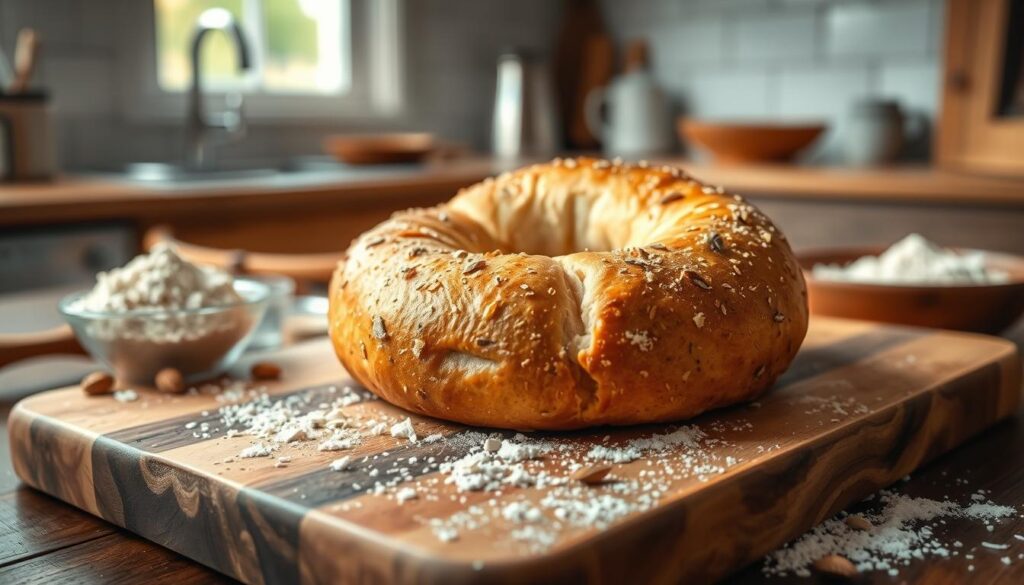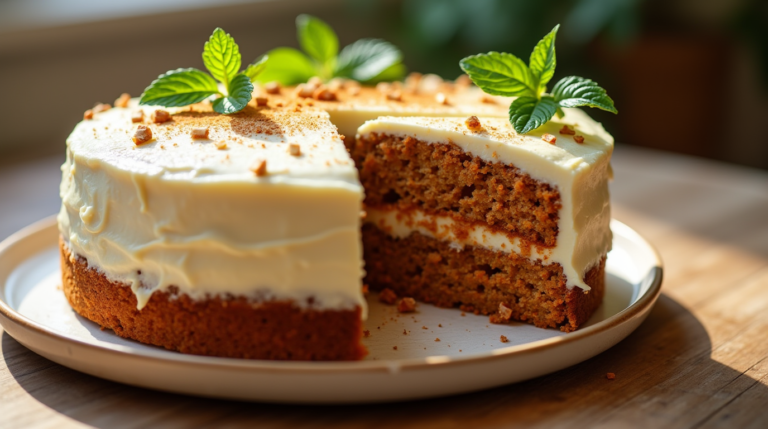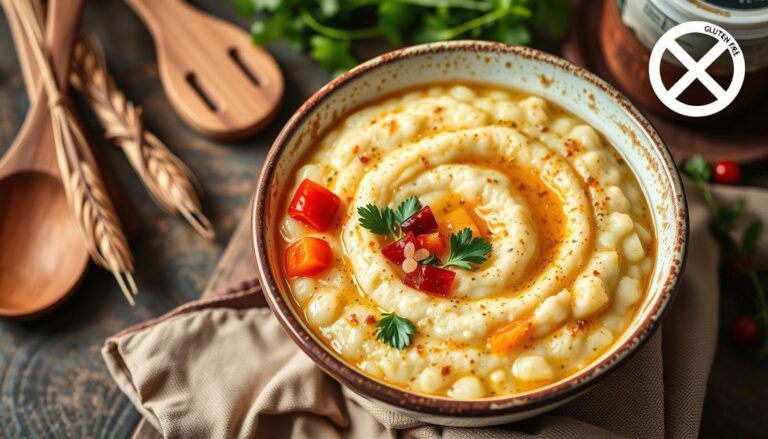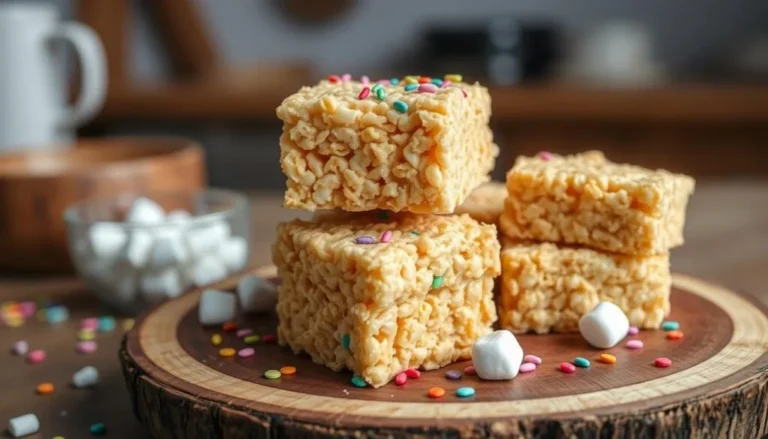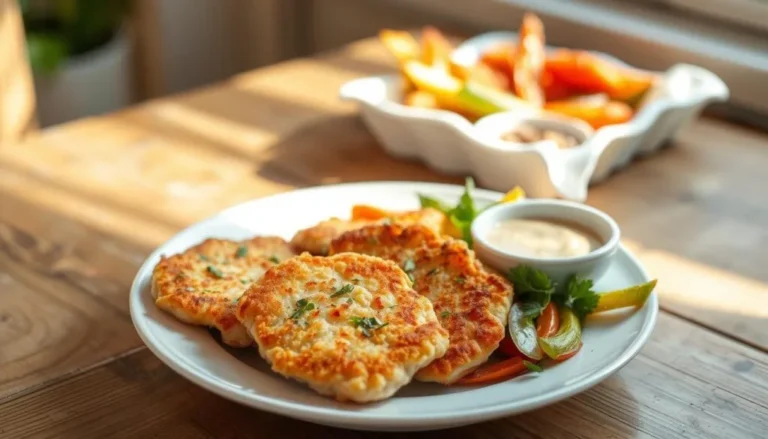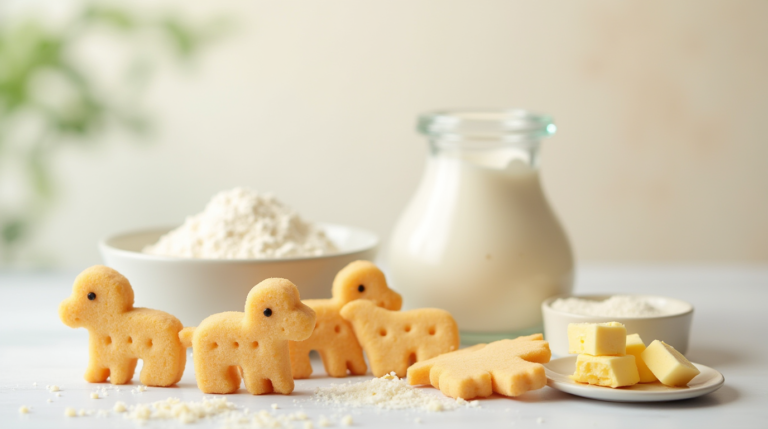How to Make the Perfect Gluten-Free Bagel at Home
Table of Contents
Are you searching for a tasty gluten-free bagel recipe to make at home? With just a few ingredients and basic tools, you can make a gluten-free bagel that’s just as good as store-bought ones. Making your own bagel lets you choose the ingredients and ensure it’s always fresh and delicious. This guide will help you make the perfect gluten-free bagel, whether you’re an experienced baker or just starting out.
Creating your own gluten-free bagel is simpler than you might think. With this guide, you’ll soon be enjoying a homemade gluten-free bagel. We’ll cover everything from the benefits of homemade bagels to the ingredients and tools you’ll need. Our aim is to give you a complete guide to making the perfect gluten-free bagel, so you can enjoy it whenever you like.
Key Takeaways
- Make your own gluten-free bagel at home with simple ingredients and basic kitchen tools
- Control the ingredients and quality of your gluten-free bagel for a fresh and tasty treat
- Follow a simple gluten-free bagel recipe to achieve authentic flavor and texture
- Enjoy the benefits of making your own gluten-free bagel, including cost savings and freshness
- Use this guide to learn the essential ingredients and tools needed for making gluten-free bagels
- Start making your own gluten-free bagel today and enjoy the delicious results
Why Homemade Gluten-Free Bagels Are Better Than Store-Bought
Making your own gluten-free bagels at home is a great way to start your day. It’s a fun and rewarding process. You get to choose what goes into your bagels, making them healthier and tastier.
One big plus of making your own bagels is saving money. Buying ingredients in bulk means you spend less. Plus, you can make gluten free dairy free bagels for those with special diets.
Benefits of Homemade Gluten-Free Bagels
- Freshness: Homemade bagels are best eaten within a day or two. This way, you enjoy them at their freshest.
- Control: You decide what goes into your bagels. This means you can make them healthier and tastier.
- Cost-effective: Making your own bagels saves money. You can buy ingredients in bulk and avoid high prices at stores.
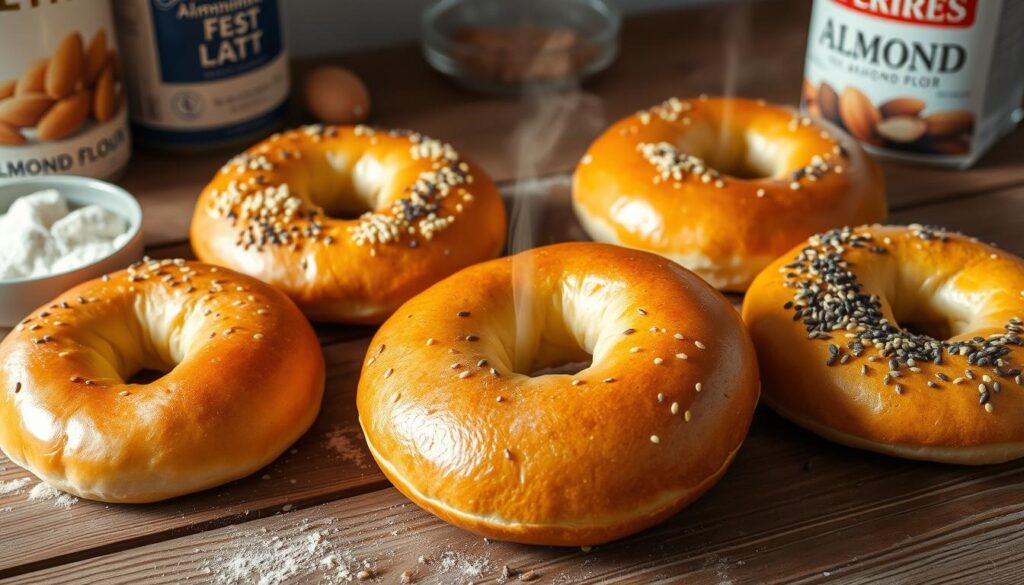
By baking your own gluten-free bagels, you get a tasty and healthy breakfast. You control the ingredients and quality. This ensures your bagels are not only delicious but also good for you.
Essential Ingredients for Perfect Gluten-Free Bagels
To make perfect gluten free bagels, you need a few key ingredients. These include a gluten-free flour blend, yeast, salt, sugar, and water. The flour blend you pick is very important. It affects the bagels’ texture and taste.
When making gluten free bagels, consider these ingredients:
- Gluten-free flour blend
- Yeast suitable for gluten-free baking
- Salt
- Sugar
- Water
Choosing the right ingredients is key for great gluten free bagel recipe results. High-quality ingredients and a trusted gluten free bagel recipe help you make delicious gluten free bagels. They can even match the taste of traditional bagels.
Kitchen Tools and Equipment You’ll Need
To make gluten free bagels, you’ll need some basic kitchen tools. A stand mixer is key for mixing and kneading the dough, especially for beginners. You’ll also need a dough whisk to help the dough become smooth and elastic.
Having the right tools is important when learning to make gluten free bagels. Here are some must-haves:
- Stand mixer
- Dough whisk
- Baking sheet
Optional tools like a bread stone or baking steel can help make the crust crispy. For gluten free dairy free bagels, a pastry brush is useful for egg wash or toppings.
Setting up your workspace is also crucial. Make sure you have a clean, floured surface for kneading and shaping. With the right tools and equipment, you’ll be on your way to making tasty gluten free bagels at home.
| Tool | Description |
|---|---|
| Stand mixer | Essential for mixing and kneading the dough |
| Dough whisk | Helps develop the gluten in the dough |
| Baking sheet | Needed for baking the bagels |
Understanding the Science Behind Gluten-Free Bagel Making
Gluten-free bagel making is all about science. Gluten, found in wheat, barley, and rye, is key for bread’s texture. To make a gluten-free bagel, we use xanthan gum, guar gum, or other gums. They help mimic gluten’s role.
A gluten-free bagel recipe mixes gluten-free flours like rice, almond, or coconut. It also includes gums and other ingredients for texture. The flour to gum ratio varies based on the recipe and desired texture.
Important factors in gluten-free bagel making include:
- The type and ratio of gluten-free flours used
- The amount and type of gums or other ingredients used to create structure and texture
- The temperature and humidity of the environment in which the gluten free bagel is made
By grasping the science and using a tested recipe, you can make tasty gluten-free bagels at home.
Step-by-Step Gluten Free Bagel Recipe
To make delicious gluten free bagels, follow a few simple steps. First, mix the dough. This means combining gluten-free flour blend, yeast, salt, sugar, and water in a stand mixer. This step is key to making great gluten free bagels.
After mixing the dough, shape your bagels. This can be a bit tricky but gets easier with practice. You can shape them into traditional rings or try creative shapes. For gluten free dairy free bagels, use non-dairy milk and vegan yeast.
Mixing the Dough
Mixing the dough is the first step. You’ll need to combine:
- 2 cups of gluten-free flour blend
- 1 teaspoon of yeast
- 1 teaspoon of salt
- 1 tablespoon of sugar
- 1 cup of warm water
Shaping Your Bagels
Once the dough is mixed, shape your bagels. Divide the dough into 8-10 pieces. Then, shape each piece into a ball and make a hole in the center to form a bagel shape.
Boiling Process
The boiling process is key for a bagel’s crust. Bring a large pot of water to a boil. Carefully add your shaped bagels to the pot. Boil for 1-2 minutes on each side, then remove with a slotted spoon.
Baking Instructions
Finally, bake your bagels. Preheat your oven to 400°F (200°C). Place your boiled bagels on a baking sheet lined with parchment paper. Bake for 20-25 minutes, until they’re golden brown.
| Step | Instructions |
|---|---|
| Mixing the Dough | Combine gluten-free flour blend, yeast, salt, sugar, and water in a stand mixer |
| Shaping Your Bagels | Divide the dough into 8-10 equal pieces and shape into bagels |
| Boiling Process | Boil the shaped bagels in a large pot of water for 1-2 minutes on each side |
| Baking Instructions | Bake the boiled bagels in the oven at 400°F (200°C) for 20-25 minutes |
Topping Ideas and Variations
Now that you’ve got the basic gluten free bagel recipe down, it’s time to get creative. Try classic toppings like sesame seeds, poppy seeds, dried onion, and garlic. Or, mix things up with cinnamon raisin or blueberry flavors.
Here are some ideas to get you started:
- Sesame seeds and salt for a classic flavor
- Poppy seeds and dried onion for a savory taste
- Cinnamon raisin for a sweet and spicy flavor
- Blueberry and lemon for a fruity and refreshing taste
You can also use your gluten free bagels to make tasty sandwiches. Try a classic lox and cream cheese or something adventurous like avocado and bacon. The possibilities are endless. It’s up to you to find your favorite gluten free bagel recipe variations.
Troubleshooting Common Issues
Learning to make gluten free bagels can sometimes be tough. You might face some common problems. But don’t worry, we’ve got some tips to help you out. These tips work for both gluten free dairy free bagels and traditional ones.
One big issue is sticky dough. This usually happens when there’s too much moisture. To solve this, add a bit of gluten-free flour to soak up the extra moisture. Another problem is with the shape of the bagels. This can be due to overworking the dough or not shaping it right.
Dealing with Sticky Dough
To fix sticky dough, add a bit of gluten-free flour. Also, let the dough rest for a few minutes. This lets the flour absorb the extra moisture. This way, you can make gluten free bagels that are just right in texture and shape.
Fixing Shape Problems
To fix shape issues, gently reshape the bagels and let them rest for a few minutes before baking. This helps the bagels keep their shape and get a more even texture. With these tips, you can make delicious gluten free dairy free bagels for any event.
Remember, making perfect gluten free bagels takes practice. So, don’t get discouraged if your first batch isn’t perfect. With patience and practice, you’ll soon be making delicious gluten free bagels like a pro. Whether you’re looking to make gluten free bagels or gluten free dairy free bagels, these tips will help you get the best results.
Storage and Freezing Tips
Now that you’ve mastered the gluten free bagel recipe, it’s key to store and freeze them right. This keeps them fresh. Store your gluten free bagel in an airtight container at room temperature. It will stay fresh for up to 3 days.
To freeze your gluten free bagel, lay them flat on a baking sheet. Freeze until solid. Then, move them to a freezer-safe bag or container. Here are some extra tips:
- Label the container or bag with the date and contents
- Store frozen gluten free bagel for up to 2 months
- Thaw frozen gluten free bagel at room temperature or reheat in the oven or toaster
By following these tips, you can enjoy your gluten free bagel for longer. Always check for spoilage before eating.
Conclusion: Mastering Your Gluten-Free Bagel Journey
Congratulations on starting your gluten-free bagel-making journey at home! With patience and practice, you’ll soon make gluten-free bagels that taste amazing. They’ll meet your cravings and impress everyone.
For the best gluten-free bagels, use top-notch ingredients and stick to the recipe. Try new toppings and flavors to make your bagels unique. Be creative and add your own twist.
Keep enjoying the process of making gluten-free bagels. With each batch, you’ll get better and more confident. Share your delicious homemade bagels with friends and family. It’s a great way to share your tasty creations and inspire others to try gluten-free bagels too.
FAQ
What are the essential ingredients for making gluten-free bagels at home?
To make gluten-free bagels, you need a few key ingredients. These include a gluten-free flour blend, yeast, salt, sugar, and water. The flour blend you pick is crucial for the bagel’s texture and taste. Choose a high-quality blend made for gluten-free baking.
What kitchen tools and equipment do I need to make gluten-free bagels?
Making gluten-free bagels requires some basic tools. You’ll need a stand mixer, a dough whisk, and a baking sheet. A stand mixer is key for mixing and kneading the dough. A dough whisk helps make the dough smooth and elastic.
Optional tools like a bread stone or baking steel can also help. They can make the crust crispy and the inside well-cooked.
How do I shape and bake the gluten-free bagels?
Shaping gluten-free bagels can be a bit tricky at first. But with practice, you’ll get better. First, mix the dough, then shape it into individual bagels.
After shaping, boil the bagels briefly in water. This step is crucial for getting the bagel’s characteristic crust.
Can I add toppings or variations to my gluten-free bagels?
Yes, you can definitely add toppings and variations to your gluten-free bagels. Popular toppings include sesame seeds, poppy seeds, dried onion, and garlic. You can also try different flavors like cinnamon raisin or blueberry.
If you’re feeling adventurous, try making gluten-free bagel sandwiches.
How should I store and freeze my gluten-free bagels?
To store gluten-free bagels, keep them in an airtight container at room temperature. They’ll stay fresh for up to 3 days. You can also freeze them for up to 2 months.
To freeze, place the bagels on a baking sheet and freeze until solid. Then, transfer them to a freezer-safe bag or container.

